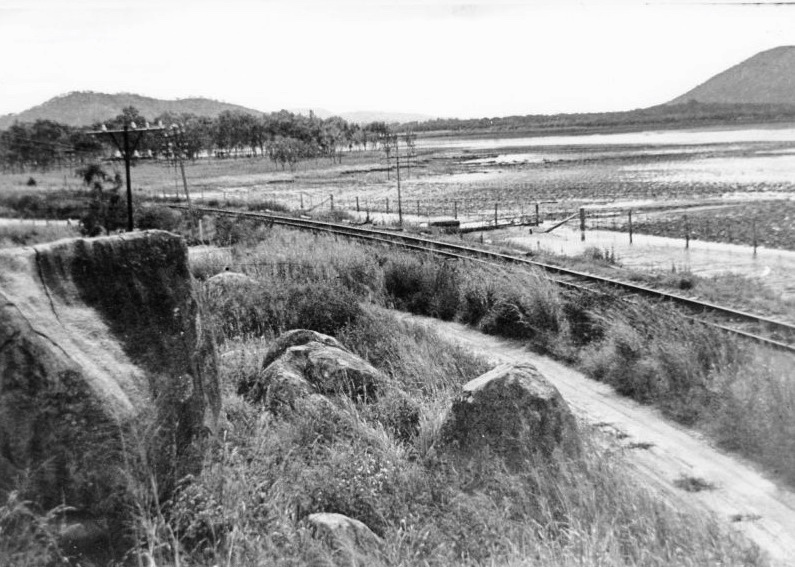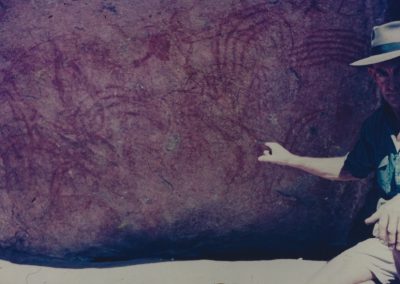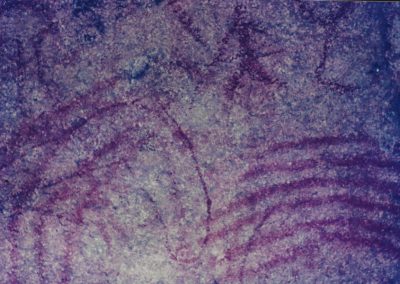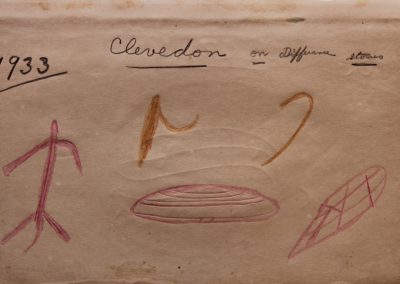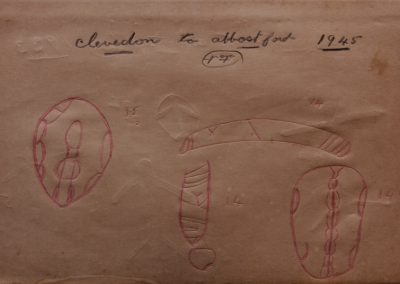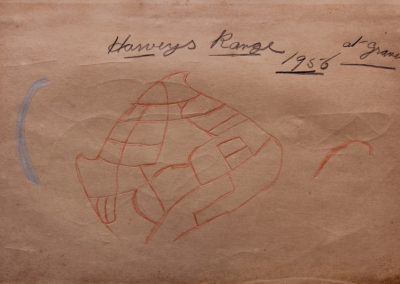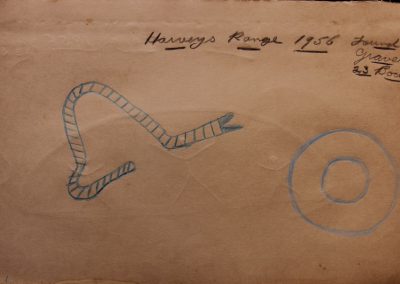The Ted Berry Story
In 1886 E M Curr published a major work on ‘The Australian Race, its Origin, Languages, Customs etc.’ being a compendium of language and observations compiled by a large network of people who had direct experience of Indigenous customs. Speaking of the tribes in Halifax Bay his informant tells us that ‘they paint representations of imaginary animals in caves and on rocks.’ This is the only record of such practice in the area until Ted Berry begins a Sketchbook of rock art in 1932.
Born in the USA in 1909, Ted Berry moved to Australia and was in Townsville by at least 1937 when he married Mary Ellen White from Ravenswood. He was a waterside worker who lived in Ireland Street, Oonoomba and he had a passion for the bush where he spent most of his spare time.
In the 1930’s and 1940’s he roamed the country south of Townsville at Cape Cleveland amongst other places – a favoured fishing spot. This is a family photograph by a shell midden – possibly at Cape Cleveland. By the mid 1930’s a small community grew up in the area when the 4QN radio mast and staff quarters were built close by but it was only Ted Berry who explored the ridges nearby and particularly at the foot of Mt Storth at Clevedon where he started to sketch the rock art that he found there.
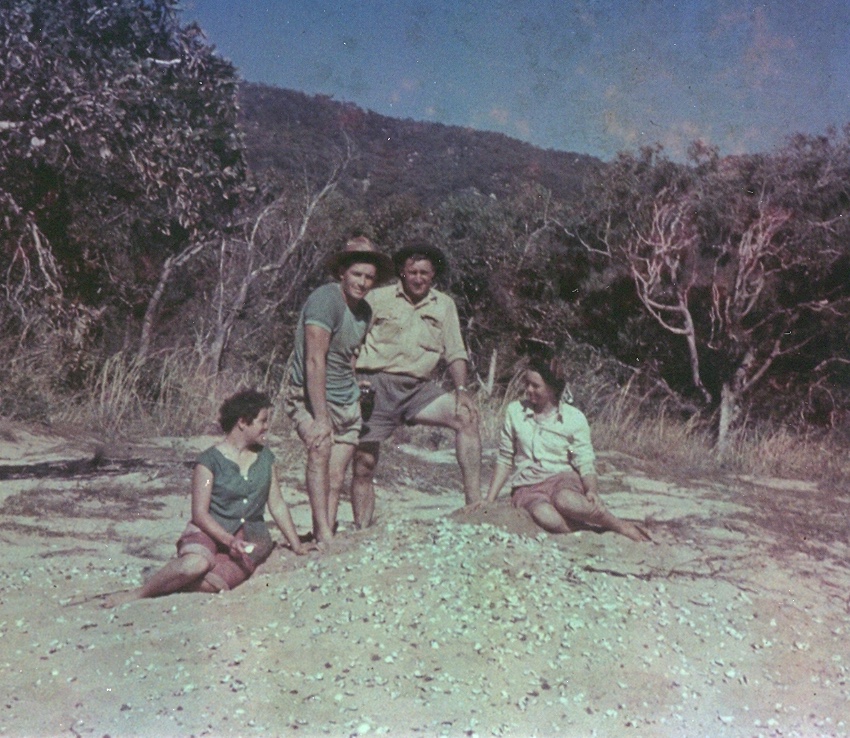
At that time the road north and south that followed the contours of the rocky hills beneath Mt Storth, meandered along the edge of the wetlands and was often impassable in the rainy season, the preferred route being inland via Woodstock. But for Ted Berry it was a wonderland dotted with rock art and history that he could only dream of.
As the 1950’s drew to a close plans were made to widen and raise the road above flood level around the sharp corner at Clevedon. The old dirt road can be seen here looking north towards Townsville with Woodstock Hill to the far right. It was deemed necessary by Main Roads to destroy the significant rock art site that projected from the corner at Clevedon. Photographs of this site can be viewed in the gallery below.
Ted Berry led a determined group of locals in oppostion to this destruction which ultimately failed, but was probably instrumental in limiting further damage.
His Sketchbook runs to 52 foolscap pages and records the rock art Ted Berry found in the area, as well as north of town at Hervey Range.
The name Clevedon derives from a rail halt that existed where the old Cape Cleveland causeway now meets the Bruce Highway. The original tramway was opened in April 1901 and served the Townsville and Ayr communities with regular halts. Abbotsford is the name of a Parish whose boundary meets the Bruce Highway several kilometres south of Clevedon.
Ted Berry also explored the country north of Townsville where there are also considerable rock art sites which intrigued him. He claimed to have found the site of an Aboriginal burial site where he uncovered the remains of 10 people – a claim substantiated in newspaper articles in December 1956. They describe the site as ‘naturally hidden by huge boulders and thick scrub’.
Much more controversially Ted Berry claimed to have discovered an Aboriginal tribe living a traditional lifestyle near Hidden Valley in the 1950’s. On this subject he said that he remained silent so as not to disturb them, only sharing the story in the 1970’s.
